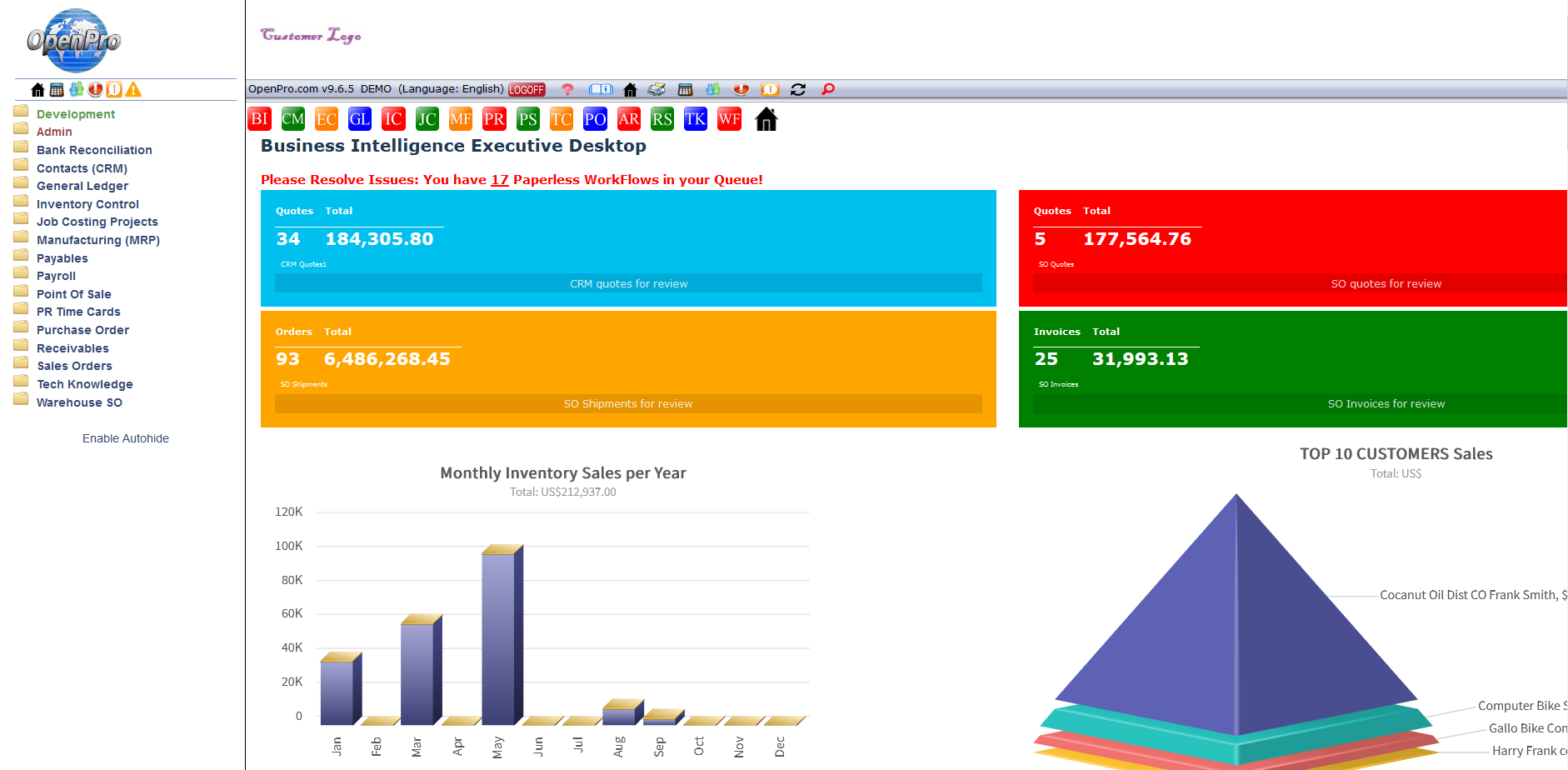The Accounts Receivable module is a flexible, open item system. It is used to record sales and monitor customer payments and includes a customer master file.
Thousands of users are relying on OpenPro ERP software everyday!
Customer File: An unlimited number of customer records can be maintained. Each customer is identified by a 15 digit alphanumeric code. In addition to the usual customer number, name and address, the file contains the last payment amount and date, and discount and account balance information. When a customer discount is entered on the customer master record, it is automatically calculated when sales are recorded. Customer pricing information is also entered on the customer master record.
Sales Transactions: Accounts Receivable allows interactive entry, editing and posting of sales and credit memos. Sales are recorded by entering an invoice. Each invoice is given a number and tied to a customer. The due dates for the charges and prompt payment discounts appear on the printed customer invoice. Item codes are entered with the quantity sold. The description and unit price appear as entered into the data file. Both of these can be overridden when necessary. There is no limit to the number of items that can be included in a single invoice. When Order Entry is used for invoicing, there is no need to re-enter invoices in Accounts Receivable. Invoices are automatically recorded from the Order Entry module.
Invoices: Accounts Receivable prints invoices and customer statements.
Payments: An invoice is held open until the payment is applied against it. In this way it is easy to track payment history and keep any disputed charges visible. When recording customer payments, all of the outstanding invoices are displayed. The amounts received are then applied to the appropriate invoices. Accounts Receivable also can code miscellaneous checks or cash directly to the appropriate General Ledger account.
Bank Deposits: All cash transactions entered individually can be grouped to match deposits made to the bank. The bank deposit entries are used in preparing the bank reconciliation report in the Accounts Payable modules.
Reports: The Accounts Receivable aging report may be printed on request for all or selected customers. Other reports are available which list both invoice amounts and payments, inventory items, fee schedules being used, and selected cash receipts by customer.
Accounts Receivable Features:
- Direct interface with General Ledger
- Accounts Receivable aging process, analysis and collections
- fast and easy cash receipts processing
- flexible sales commission processing with several options by sales or cash receipts
- Credit and debit memo processing
- Manage credit limit for customers
- Finance charge processing
- Automated work flow processing for customers
- Sales tax reporting and tracking
- Maintain and monitor aging and discounts
- Active/Inactive status of customers
- Allow cash application across companies
- Date and time stamp notes on customers and transactions
- Drill down to the original document
- Multi-currency
- Send documents by fax, email, or printer
- Audit trial reporting
- E-commerce credit card processing
- Timely information improves cash flow and reduces bad debt
losses - Detailed and summary aged listing
- Reprint invoices
- Customer statements processing
- Reseller tax ID collection
- Unlimited payment terms
- Unlimited customer ship to addresses
- Open items, terms, rebates and commission processing
- Multi-level tiered commission available
- Integrates with Order entry and Job costing
- Time billing is supported
